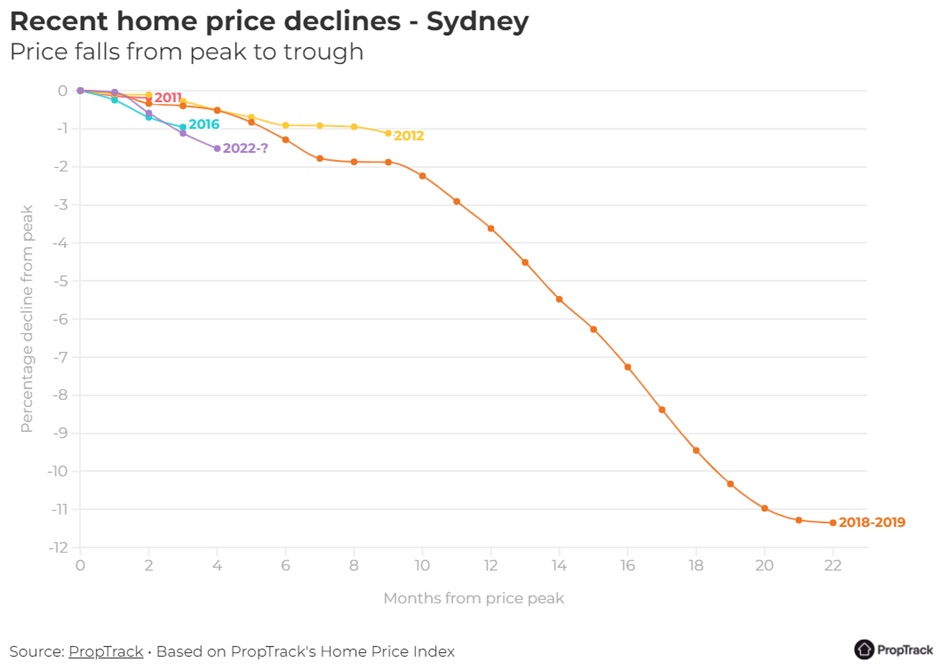The property market is going to crash!
How many times have we heard that one recently?
Inflation is rampant and the RBA is hell bent on getting it under control meaning rising interest rates will strangle our housing markets.
Well, that's what mini so-called experts in the media is telling us, isn't it?
Even our banks are predicting property values will fall 10%, 15 or even 20% over the next year or so.
One prominent commentator is suggesting property values could implode by 30%.
There is no doubt that our property markets have moved into the next stage of the cycle – the adjustment stage - where property values are falling slightly in Melbourne and Sydney and growing more slowly in the other capital cities.
This plus the continual conveyor belt of negative news has dampened both buyer and seller confidence.
However, it's more than interest rates that affect property values.
Let's learn from the past
As they say...past performance is no guarantee of future performance, but Eleanor Creagh, Senior Economist at the REA Group, took a look at what happened in past downturns to give us an indication of what could lie ahead.
So, what have past downturns looked like?
Creagh explains:
"Since 1990, there have been only five periods when year-ended nominal home price growth has been negative.
Those downturns have never been greater than 10% in year-ended terms.
And in every instance, the preceding upswing has been larger than the downturn that has followed."
In other words, the predictions being made suggest we will experience the worst housing downturn in modern history, despite the economy performing well and unemployment is at a historic close.
Looking even further back to 1880, adjusted for inflation, price declines of 30% have never occurred according to Creagh.
How long and steep have recent downturns been?
Remember there is not one Australian property market, and some market segments have experienced steep declines in the past, however, various predictions are being made up for the overall Australian property market.
According to PropTrack’s Home Price Index, in recent history, Australia-wide downturns have lasted an average of between nine months and ten months, with prices falling on average 2.8% from peak to trough.
The largest peak to trough downturn in recent years was in 2018/19 when national home prices fell 5.5% over a 13-month period.
What did past Sydney market corrections look like?
In Sydney, the decline of 2018-9 saw prices falling 11.4% over 22 months.
In 2018/19, interest rates weren’t rising, but falls were driven by a credit squeeze, as the effect of various prudential measures reduced borrowing amounts, in a period of weak wages growth and a soft labour market.
What did past Melbourne property market corrections look like?
What did past Brisbane property market corrections look like?
What's ahead?
Creagh suggests:
"Now interest rates are moving higher quite quickly, mortgage rates have followed suit and as interest rates continue to climb, borrowing capacities will be further constrained.
If interest rates end the year above 2%, and that is passed through to mortgage rates, maximum borrowing capacities will be constrained by close to 20%.
The cost of servicing a mortgage will also increase significantly.
This will impact would-be borrowers and weigh on home prices.
A silver lining that could offset this to some degree is the tight labour market.
Unemployment is the lowest it’s been since August 1974 and hopefully stronger wages growth will materialise as a result.
Currently, household budgets are under pressure as the cost of living has risen, along with interest rates, and put real wages growth in deeply negative territory.
How household spending holds up against a backdrop of higher inflation and falling house prices (the negative wealth effect), versus savings and wealth buffers, and hopefully stronger wages growth, will be crucial in determining the loss of conditions in the economy and how high and fast the cash rate rises.
This dynamic will also be a key source of uncertainty for the housing market and the pace and depth of price falls."
Source of Charts and commentary - realestate.com.au Insights



















